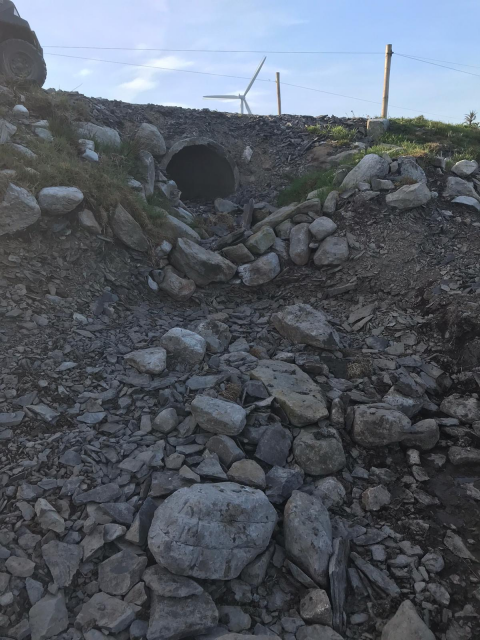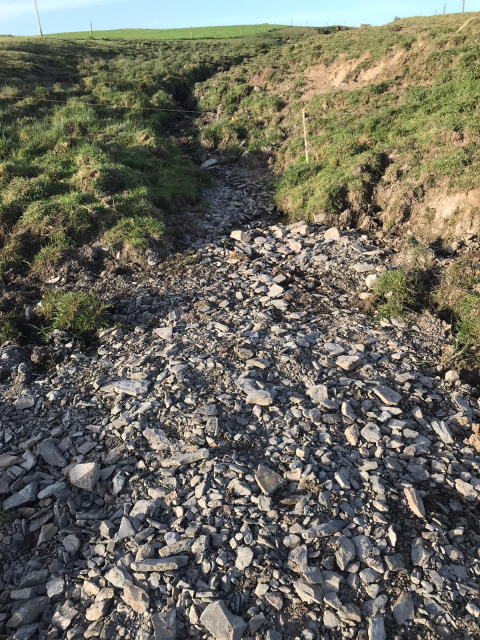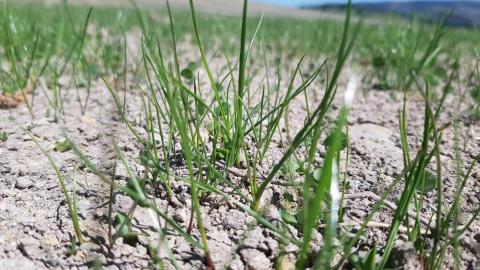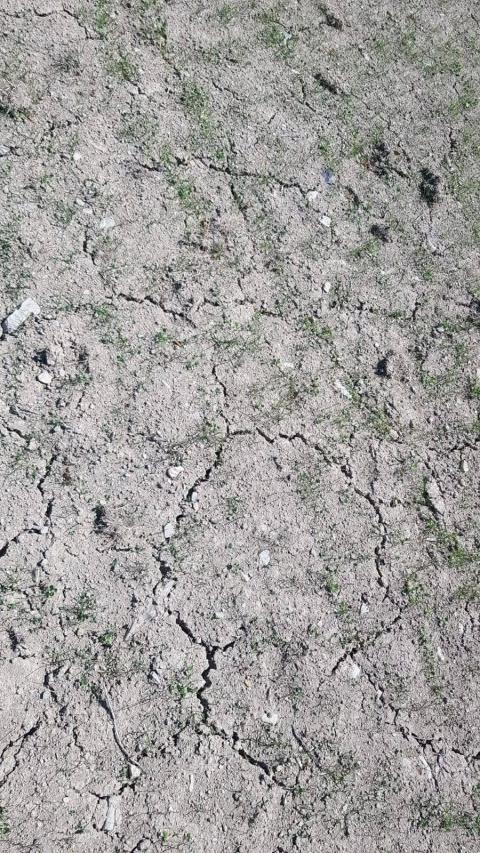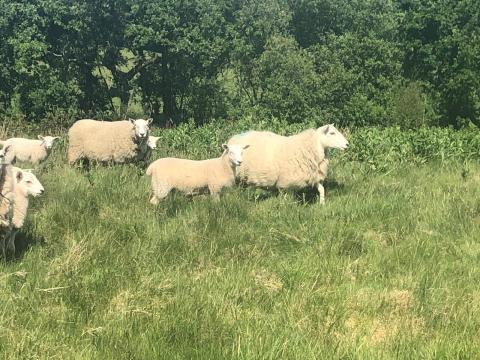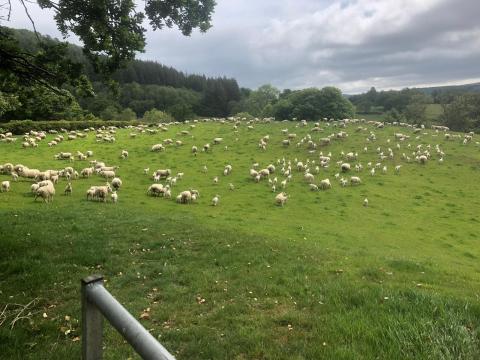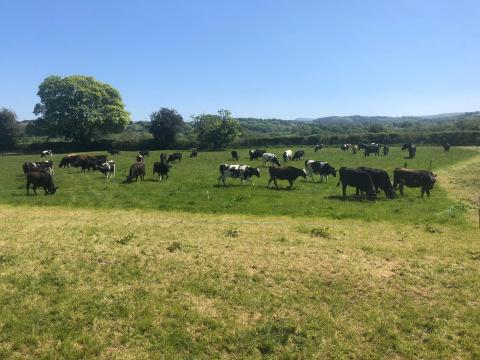4 June 2020
Persistent dry weather conditions during recent months have led Farming Connect’s red meat demonstration sites to adjust management practices to meet the challenges they’re facing. It has become evident that reduced grass growth rates and diminishing water supplies are the main challenges facing Welsh beef and sheep farmers during this period.
With drought-like conditions set to continue for the foreseeable, the impacts of reduced grass growth on lamb growth rates, and grass-based beef finishing systems are yet to be determined. These conditions will also have an adverse impact on the quantity and quality of forage produced in preparation for winter months.
Here are a few examples of how this early drought is affecting some of the red meat demonstration sites across Wales, and which strategies they’re implementing to cope with this challenge.
Hendre Ifan Goch, Bridgend
Russell and Rhys Edwards farm at Hendre Ifan Goch in Bridgend. The farm, which rises from 600 feet to 1,300, supports 400 Aberfield mules, 200 Welsh mules and 130 ewe lambs.
Ewes and lambs are currently moved daily on the rotational grazing system as a result of reduced grass growth during this dry period. They are coming out of fields at 1,450kg DM/ha, and moving into fields of just 1,750kg DM/ha. At the moment, grazing fields are only growing 22kg/day, we would usually expect over 70kg/day this time of year. Soil moisture levels are at 120kpa.
Forty acres of chopped pit silage is usually harvested in June. However, Rhys is concerned that the quantity and quality of this years’ silage crop will be compromised. At the moment, silage fields are growing an average of 80kg/day.
Water supply is also an issue at Hendre Ifan Goch. 1,300 litres of water per day is currently transported to sheep as all natural water sources have dried up.
Record of rainfall at Hendre Ifan Goch in May 2019 versus May 2020.
Moelogan Fawr, Llanrwst
Llion and Sian Jones farm at Moelogan Fawr, Llanrwst on a 304 hectare upland farm. Moelogan Fawr rises from 1,000 feet to 1500 and supports a beef herd of 100 suckler cows and 36 heifers and a flock of 1200 ewes.
As the soil is peaty, grass growth rates haven’t been impaired as much as in other soil types. However, sufficient water supplies are an issue at Moelogan during these types of conditions. Water is usually available in natural streams, however sources have dried up. As a result, the farm purchased a solar pump and additional pipes at a cost of £3,380, which will be used to pump water up to the higher altitude on the farm. Although this piece of kit appears expensive, Llion and Sian are confident that it will have paid for itself after two dry seasons as it is responsible for providing water to such a vast surface area.
The highest part of the farm is usually rotationally grazed but with no water sources all gates have to be left open to maintain access to water sources, therefore it is set-stocked, leading to lower grass growth rates as it doesn’t get a recovery period. The solar water pump and water troughs will enable them to continue with their grazing rotation and the grass will recover in due time.
Dried-up water sources at Moelogan Fawr
Cefngwilgy Fawr, Llanidloes
Cefngwilgy Fawr Demonstration Site is a 200-hectare upland holding farmed by Edward and Kate Jones and Edward’s father, Gareth. A herd of 50 suckler cows and a flock of 1,000 sheep graze the farm, which rises from 700 feet to 1,100 feet at its highest point.
As a part of the Farming Connect project at Cefngwilgy Fawr, two fields were re-seeded with white clover and red clover mixes respectively, on the 6th May 2020. They appear to be germinating, however, they are in desperate need of more moisture to flourish. First graze is expected in mid-June by lambs, however this may be delayed as a result of slower growth rates.
Re-seeding at Cefngwilgy Fawr, sown on 6th May 2020.
Ground conditions at Cefngwilgy Fawr
Glanmynys, Llandovery
Glanmynys Demonstration Site is a 202-hectare (ha) beef and sheep holding farmed by the farm owner, Carine Kidd, and her share farming partner, Peredur Owen. The farm supports a flock of 700 Welsh and Aberfield x Welsh ewes, with the majority lambing outdoors between April 1st and May 1st. A herd of 25 suckler cows, mostly Simmental-crosses, calve in the spring and the autumn but numbers will be reduced this summer to grow the sheep and growing cattle enterprises.
The drought is affecting the farm in similar ways to other beef and sheep farms in Wales. Reduced grass growth is the key issue here, with a re-seeded field sown in mid-April in dire need of rain to boost growth.
“We currently measure grass growth on a monthly basis, however, we’re planning on measuring more often to gain a better understanding of grass growth patterns and in order to gain a better control on utilisation” - Peredur Owen, Glanmynys, 27th May 2020.
Water supply isn’t an issue at Glanmynys, with a reliable mains supply and natural spring water in abundance.
One of Carine and Peredur’s strategies to cope with this challenge is to implement a drought plan, working in conjunction with Precision Grazing to achieve this.
Above: Easycare ewe lamb out of a Welsh ewe
Below: Ewes and lambs grazing at Glanmynys
Above: Cattle on a rotational grazing system at Glanmynys
Potential options to consider to ease pressure on grazing and resources during this period:
- Wean lambs earlier than usual
- Off-load cull ewes and cows as soon as possible
- Creep-feed lambs and calves to minimise dip in growth rates
- Sell lambs as stores as opposed to finishing.

